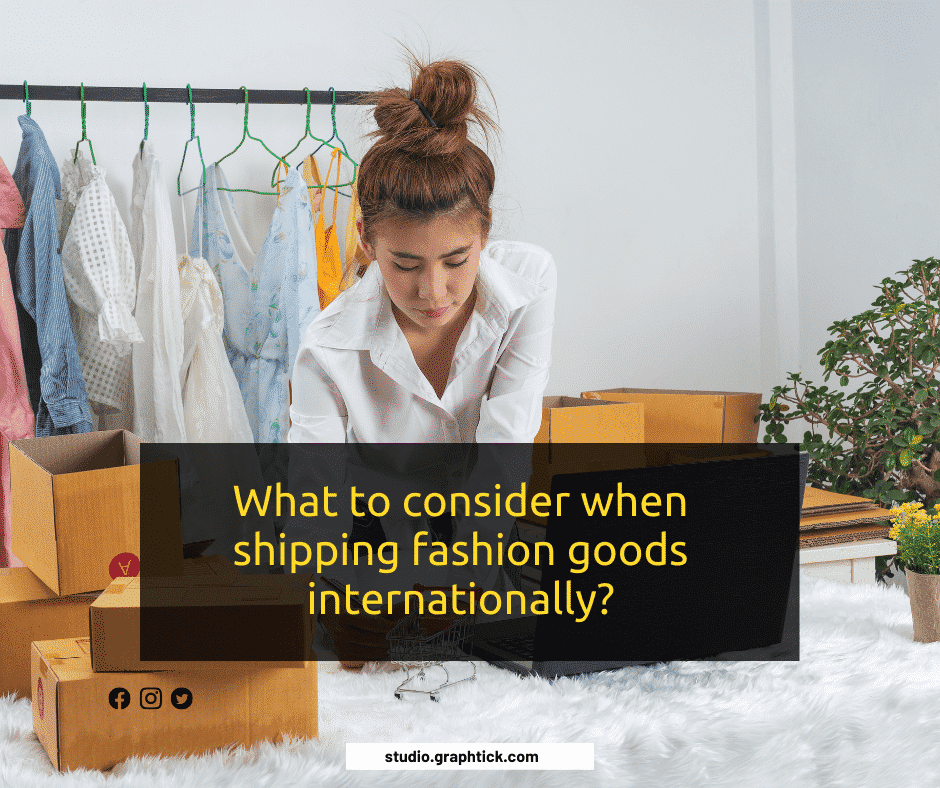
What to consider when shipping fashion goods internationally?
After your manufacturing partner has finished the products on your label, you need to bring them from the factory to your flagship stores, distribution centers, or wholesale partners. Before launching them internationally, however, there are a few important things you should be aware of that may not be so obvious.
Read on to learn what to consider when launching your label products internationally.
Do you need an HS code?
The short answer – yes.
You may have noticed six or more digit codes on your invoices or shipping labels. These are called HS codes. The HS code, also known as the system harmonization code, is the internationally recognized labeling system for the classification of products for customs duties and import logistics. No matter where you ship a shipment to or from it, your products must use a predefined HS code that has the same definition of goods in all countries.
Cotton HS Code Makers Valley:
US codes typically consist of nine digits, and the first two digits identify the chapter into which the product enters; the next two numbers define the header, e.g. where the product falls within the specified chapter. The other numbers break down the product into much more precise definitions, depending on the specific conditions and changes made to the product. However, the first four digits play the most important role in defining the category in which the products fall.
These first four digits set out the rate plan that your products must follow when leaving or entering a country. For this reason, some companies choose to change the conditions of their products or leave them unchanged in order to benefit from one tariff plan over another. Similarly, in international trade, certain companies may choose to take the next step in the process of the product in another country in order to classify that product as the product of that country and to take advantage of the related free trade agreements.
The following are some of the most commonly used HS codes for fashion products or accessories:
US fashion codes Makers Valley
Free trade agreements affecting fashion shipments:
As mentioned above, it is sometimes necessary to ship from country to country in the most convenient way to complete the next steps of a manufacturing process or to divert shipments between different countries in order to take advantage of free trade. This may seem counterproductive and more expensive, but sometimes it will be the cheapest action because of the tariff costs.
To survive on this, you should know the country to which your products are shipped to and from and the free trade agreements to which they apply. Then you can fly these products around the world to reap as many free shipping benefits as possible until they reach their final destination.
Some important free trade agreements around the world:
AFTA | Association of Southeast Asian Nations Free Trade Agreements: Brunei, Indonesia, Malaysia, Philippines, Singapore, Thailand, Myanmar, Cambodia, Laos, Vietnam, China
AE | European Union: Austria, Belgium, Bulgaria, Croatia, Republic of Cyprus, Czech Republic, Denmark, Estonia, Finland, France, Germany, Greece, Hungary, Ireland, Italy, Latvia, Lithuania, Luxembourg, Malta, the Netherlands, Poland, Portugal, Romania, Slovakia, Slovenia, Spain, and Sweden
NAFTA North American Free Trade Agreement: Canada, Mexico, USA
APEC | Asia-Pacific Economic Cooperation: Australia, Brunei Darussalam, Canada, Chile, China, Hong Kong, Indonesia, Japan, Republic of Korea, Malaysia, Mexico, New Zealand, Papua New Guinea, Peru, Philippines, Russia, Singapore, Taipei, Thailand, USA, Vietnam
RCEP | Global Regional Economic Partnership: Australia, Brunei, Cambodia, China, Indonesia, Japan, Laos, Malaysia, Myanmar, New Zealand, Philippines, Singapore, South Korea, Thailand, and Vietnam
Regional rules and regulations for fashion products:
The last thing to keep in mind when shipping internationally is the rules and regulations of each country with which you interact. Some have strict guidelines on the types of products that can be imported into the country or sold to the public.
These guidelines can be introduced for a variety of reasons, such as B. from public security, the protection of the national economy, protection from foreign influences, and much more. It would be terrible to send your products thousands of miles overseas only to stop at the border before they are finally sold.
To ask this question, research foreign trade guidelines that may affect your sales goals, suppliers, and manufacturing partners before investing your capital. You should also be aware of any breaking news or updates on foreign policy and interactions that may require you to re-send your labels.
Shipping your products internationally shouldn’t put you off. It should be exciting to make your products accessible to a wider audience and to use a global network of craftsmen and professionals. HS codes, free trade agreements, and regional regulations are very scary tools, but when researched they can help you get the most out of your fashion, manufacturing, and marketing materials investments. At the end of the day, the more time and effort you spend researching shipping rules, the better you can wisely use each of the options.
Read more at studio.graphtick.com

0 comments